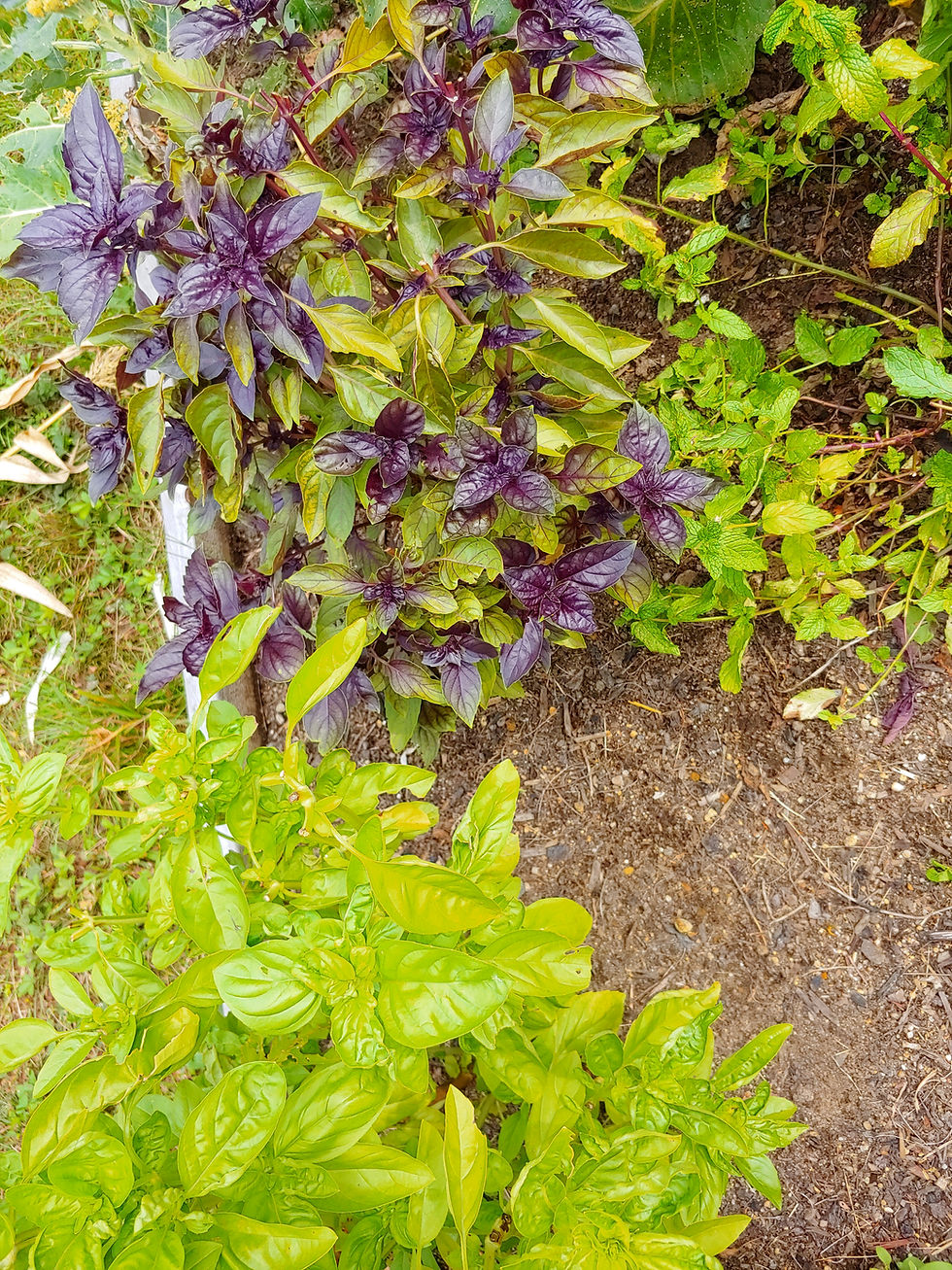Dehydrated Herbs
- Dirigo Ranch Wife
- Sep 10, 2018
- 3 min read
No country french farm scene would be complete without the scent of lavender floating on the breeze. While we are definitely not in Paris, I made a point to plant a slew of lavender stems in our gardens, along with many other herbs.

This year we planted two varieties of basil, rosemary, thyme, mint, dill, and flat-leaf parsley to go alongside the lavender. We have used many of the fresh cuttings to season differnt meals, but sadly, as the temps begin to drop, my aromatic herbs will eventually fade, too...

I didn't want to waste what we were able to grow so, I had to find a way to preserve the unused herbs. There are a variety of ways to do this - using the herbs in scrubs, oils, or butters - I opted to use dehydrate mine for cooking purposes, but I may use some for body scrubs, too. If I had my hands on some copper pots, I might even be able to distill the herbs into essential oils - but I'm not that talented yet.
Ovens, microwaves, and hang-drying are all options for dehydrating, but if you have access to a dehydrator (which I did) then I'd recommend using one of those instead (far simpler). You can find them at your big-box stores, or used online from Marketplace sites, or from sources like Amazon.com. There are tons of options, and sizes, and levels of quality... The one I have been using is older, and pretty basic, but it worked like a charm (I like things simple). I did try the microwave method at first, which almost led to a fire... So, I don't think I'd recommend that again. If I had to do it another way, hang drying would be the best option (if you aren't in a rush) or experimenting with the oven on a low, low setting.
One of the best parts about either of these options, is that it makes your kitchen smell wonderful! The steps are simple and you'll be super pleased with the end results.
I cut my herbs off the stems using a pair of kitchen scissors. Always try to cut at a tip where there is new growth that can take off below the cut mark. I really hated doing this at first, because I was so worried about more stems and leaves growing back. The thing to keep in mind, is that all of the nutrients in the plant are feeding the biggest blooms - if you take those away, you are then giving the plant the opportunity to redirect those nutrients to new blooms. It's okay to cut some away!
Next, I bring them inside and wash them off - picking off any dirt or left over debris. The herb leaves are sitting out in open air, so the reality is that they really aren't all that cruddy to start with. We also don't use any sprays or pesticides on them, so there's not much that needs to be removed. Pat them down until they are mostly or completely dry with paper towels.

Pluck off all of the larger leaves from the stems - they will dry a little faster that way. Place each leaf on the dehydrator tray (or on a tray to go in the oven) and ensure that none are overlapping.
If hang drying, intead leave the leaves and stems intact, and bunch the herb stems. Bundle them together with small string, or twine and hang in a cool, dry place. Check them often until the leaves are brittle.
Place the full trays into the dehydrator and turn it on. I let mine go for up to 6 hours, and check their status frequently (about every hour). Depending on the temp you set it to, they may take more or less time. When the leaves are crunchy, is when I turn it off. I then store them in glass jars (could use mason jars), whole. However, I plan on investing in a little mortar & pestle to properly smash them up.

I have found that these herbs keep significantly more aroma and flavor than that of the store bought seasonings I usually use. Looking foward to sprinkling them on various dishes all year long!



Comments